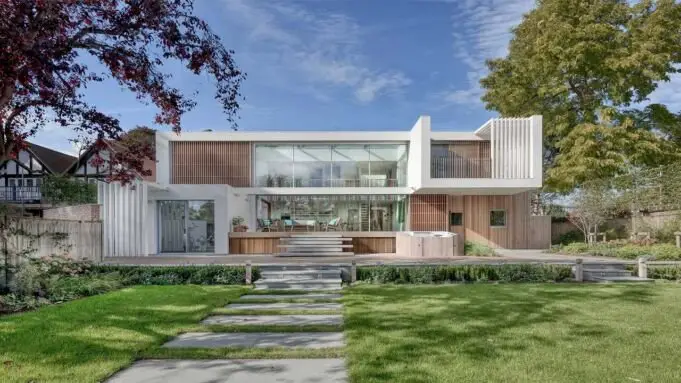Working with residential architects is essential to making your ideal house a reality. Homeowners and architects work together in a dynamic process that calls for clear communication, understanding, and a common goal.
This guide will explore key aspects of collaborating with residential architects to ensure a smooth and successful construction or renovation project.
1. Define Your Goals and Priorities
Before engaging with a residential architect, defining your goals and priorities for the project is essential. What are your must-haves, and what are your preferences? Establish a clear vision for your dream home, considering style, functionality, and budget factors. This initial clarity will be a foundation for effective collaboration with your architect.
2. Research and Select the Right Architect
Selecting the ideal residential architects in Melbourne, for instance, are an essential part of working together. Look up local architects, check their portfolios, and ask friends, relatives, or coworkers for recommendations. Seek architects who share your vision and have expertise working on home projects.
Arrange meetings to discuss your project, evaluate the interviewee’s communication style, and ensure they get your objectives.
3. Establish Open Communication
Effective collaboration with a residential architect is predicated on open and honest communication. Have open lines of communication with your architect from the beginning of the project. Explain your thoughts clearly, voice any worries, and be upfront about your expectations.
Encourage open communication between you and your architect by asking them to express their ideas and perspectives openly. Regular updates and meetings are essential to keep everyone on the same page and maintain alignment throughout the project.
This dedication to open communication creates a cooperative environment and establishes the foundation for a fruitful collaboration.
4. Create a Realistic Budget
Working with a home architect effectively requires having a reasonable budget aligned with your project objectives. Fostering open communication and being honest about your financial restrictions are crucial. Work with your architect to create a budget to meet your requirements and guarantee the project’s success.
Utilize your architect’s skills to gain insightful advice on economical design choices and help set budget priorities. This cooperative method establishes the project’s financial foundation and promotes an open and helpful communication channel with your architect.
5. Embrace the Design Process
In residential architecture, the design process is a crucial point where your thoughts become concrete blueprints from abstract concepts. During this phase, it’s critical to cultivate a tight working relationship with your architect and take an active role in conversations regarding design concepts, floor layouts, and material choices.
Adopt a flexible mindset, be open to recommendations, and have faith in the skills of your architect. A genuinely collaborative design approach guarantees that the finished designs reflect your vision and easily incorporate functional needs, producing a house that skillfully blends style and functionality.
6. Prioritize Sustainability
The importance of eco-friendly and sustainable design has grown significantly in the modern world. Prioritize incorporating eco-friendly strategies into your project when working with your domestic architect.
Discuss energy-saving techniques, look into using eco-friendly building supplies, and consider further sustainable design choices.
A collaborative approach to sustainability has a beneficial effect on the environment. There could be long-term financial savings from it. By coordinating your vision with sustainable principles, you may build a house that embodies your beliefs and contributes to a more sustainable and healthy future.
7. Stay Flexible
Flexibility is a cornerstone of successful collaboration, and residential architecture is no exception. Unforeseen challenges, such as structural issues or regulatory changes, may emerge during construction.
Working closely with your architect is crucial, fostering a collaborative spirit to find creative solutions and make informed decisions when unexpected situations arise. Embracing a flexible and adaptive approach not only navigates challenges effectively but also contributes significantly to the overall success of your residential project.
8. Emphasize the Importance of Project Management
Any residential building or renovation project must be executed with effective project management. Work closely with your architect to develop a clear project plan, a realistic timetable, and important milestones.
Critical elements include:
- Keeping an eye on progress regularly.
- Correcting delays right away.
- Making sure that everyone involved understands their duties and responsibilities.
Effective project management facilitates more seamless communication and greatly raises the possibility that your home project will meet or surpass your expectations.
9. Incorporate Technology
In contemporary times, technology is pivotal in facilitating efficient cooperation between residential architects and homeowners. Collaboration is streamlined when design software, communication channels, and project management tools are used.
The experience is improved with virtual reality and 3D modeling, which let you see the finished product and make wise choices throughout the design stage. Accepting these technology developments boosts productivity and makes teamwork more fluid and dynamic.
10. Celebrate Achievements and Learn from Challenges
Celebrating milestones and achievements with your residential architect and project team is vital in recognizing the dedication put into creating your dream home. Embrace challenges as opportunities for learning, working collaboratively to identify solutions. This approach ensures the current project’s success and enriches future collaborations through shared experiences and continuous improvement.
Crafting Your Dream Home Through Seamless Collaboration
Working effectively with residential architects is a complex process that requires flexibility, shared vision, and open communication. Establishing clear objectives, choosing the ideal architect, and being open to the design process are the first steps toward a fruitful collaboration.
The collaborative experience is further enhanced by emphasizing project management, embracing technology, prioritizing sustainability, and being adaptable. In the end, working together guarantees that your residential project will meet and surpass your expectations, giving you a house that perfectly captures your style and way of life.














